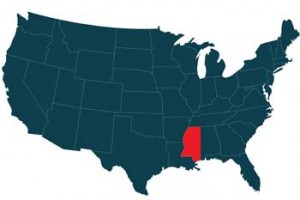Mississippi Emergency Vehicle Light State Statutes
 The importance of emergency vehicle lights cannot be overestimated. These devices are literal lifesavers that provide first responder, construction, and utility vehicles with the means to warn travelers to decrease speed or move away from hazardous road situations. While there are many similarities regarding emergency vehicle light usage among the United States, the laws regarding the kinds and colors of lights are not uniform. Vehicle light requirements vary greatly from state to state.
The importance of emergency vehicle lights cannot be overestimated. These devices are literal lifesavers that provide first responder, construction, and utility vehicles with the means to warn travelers to decrease speed or move away from hazardous road situations. While there are many similarities regarding emergency vehicle light usage among the United States, the laws regarding the kinds and colors of lights are not uniform. Vehicle light requirements vary greatly from state to state.
Mississippi allows designated vehicles to use emergency vehicle lighting. Miss. Code Ann. § 63-3-103(d) defines and regulates emergency vehicles in the state as any vehicle that is operated by the police, fire department, or EMS. The law dictates which kinds and colors of warning lights the state allows for emergency vehicles.
Police Lights
Miss. Code Ann. § 63-7-19 mandates that police vehicles use blue warning lights unless they are unmarked vehicles according to Sections 19-25-15 and 25-1-87. The blue police lights may be blinking, rotating, or oscillating to alert other vehicles to yield. The law also specifies that law enforcement vehicles and other designated emergency vehicles may use blinking, rotating, or oscillating red police lights.
Fire Truck Lights
Miss. Code Ann. § 63-7-19 requires that fire vehicles be marked with red warning lights. The lights may be blinking, rotating, or oscillating.
Volunteer Firefighter Lights
Miss. Code Ann. § 63-7-19 mandates that department or privately owned vehicles used in the service of volunteer fire departments be marked with blinking, rotating, or oscillating red warning lights.
Ambulance Lights
Miss. Code Ann. § 63-7-19 that ambulances and special use EMS vehicles described in Section 41-59-3 use red lights in the front and back. Ambulances that are used for emergency tasks may use blinking, rotating, or oscillating red lights to alert other vehicles to yield. These vehicles may also use amber and white lights in conjunction with the red lights.
Emergency Management Lights
 According to Miss. Code Ann. § 63-7-19, emergency management or civil defense vehicles, including those of the Department of Environmental Quality, must use blinking, oscillating, or rotating red lights. Official Emergency Communications District vehicles are authorized to use red and white lights.
According to Miss. Code Ann. § 63-7-19, emergency management or civil defense vehicles, including those of the Department of Environmental Quality, must use blinking, oscillating, or rotating red lights. Official Emergency Communications District vehicles are authorized to use red and white lights.
Tow Truck Lights
Miss. Code Ann. § 63-7-19 authorizes wreckers to use blinking, rotating, or oscillating amber warning lights.
Mail Delivery Vehicle Lights
Miss. Code Ann. § 63-7-19 states that United States mail carrier vehicles may use amber lights on the front top of the vehicle and red lights on the rear top. The vehicles may also use a flashing white strobe light on the roof to warn oncoming motorists to slow down to avoid collision with the mail carrier.
Sanitation Vehicle Lights
According to Miss. Code Ann. § 63-7-19, sanitation collection vehicles may use oscillating or flashing amber or white lights to warn oncoming motorists to slow down to avoid collision with the sanitation vehicle.
Military Funeral Procession Lights
Miss. Code Ann. § 63-7-19 decrees that any commercial or private vehicle used to facilitate or lead a military funeral procession may use rotating, blinking, or oscillating purple lights.
Other Vehicle Lights
According to the Mississippi Attorney General's office, Miss. Code Ann. § 63-7-13 ,-15, and -17 describe general lighting requirements for motor vehicles, trucks, semi-trailers, and tractors. These overarching statues apply to construction vehicles, utility vehicles, pilot vehicles, and private security vehicles.
For more information about what lights may be available to you, we suggest calling your State Highway Patrol office at: 601-987-1212
*Please note that these numbers are what we are currently able to find and the numbers may have changed since this listing.
Disclaimer: The emergency vehicle light state statute guide was created by Extreme Tactical Dynamics as a guide and reference. We make no claim to the accuracy or validity of this guide. This guide was written to the best of our knowledge and has been provided to our customers as a courtesy ONLY! The information in this guide is our interpretation of the law as we have read it. We cannot be held responsible for any errors as this is only our interpretation of the law and the laws are constantly changing. We cannot be held liable or responsible for any errors and recommend that our customers refer to their local authorities to confirm the particular statue that governs their use of emergency vehicle lights.
 Facebook
Twitter
Google+
Instagram
YouTube
Facebook
Twitter
Google+
Instagram
YouTube


